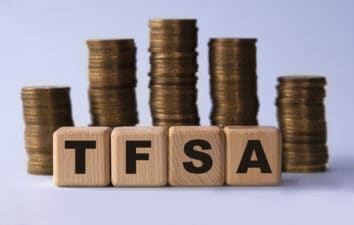Because of wider price differentials between Canadian light oil as well as deteriorating fundamentals for West Texas Intermediate (WTI) Bonterra Energy Corp. (TSX:BNE) recently slashed its monthly dividend. The cut, which took that payment to a mere $0.01 per share, which is well below the pre-oil slump high of $0.30 per share and leaves Bonterra with a forward yield of just over 1%, has sparked considerable speculation about company’s health.
Trading at less than the value of its oil reserves
Bonterra’s core assets are located in Alberta’s Pembina Cardium area with oil reserves of just under 100 million barrels. Those are valued at $1.3 billion before taxes and after applying a 10% discount rate in accordance with industry methodology. Based on Bonterra’s outstanding share float, that equates to $39 per share, which is more than five-times its current market price. The reason for this noticeable difference is that the market heavily marked down Bonterra’s value after the driller announced that it had slashed its dividend to a tenth of what it had been previously.
Further, the value of those reserves is based on an assumed average 2018 price for Canadian light crude, known Edmonton Par, of $65.44 per barrel, which is more than $10 greater than the current spot price. This means that the value of Bonterra’s reserves will decline if oil remains weak over the remainder of 2018 and into 2019 as some analysts are tipping.
Another issue is that a large proportion of the company’s oil reserves are undeveloped and non-producing. In order to bring them online so that they commence production and start generating cash flow, Bonterra will be required to invest considerable capital. There is no guarantee that those assets will meet expectations or be economic to operate in an environment WTI is trading at less than US$55 per barrel.
The latest results were disappointing
The concerns regarding Bonterra’s operations were magnified by its less than stellar third quarter 2018 results, where it missed analyst expectations. Oil production for the period declined by 2% year over year to 13,043 barrels daily, although that wasn’t caused operational issues but rather scheduled well and infrastructure maintenance. Most of that maintenance is scheduled to be completed by the end of 2018, and regardless of lower production for the third quarter, Bonterra has reiterated its 2018 production guidance of 13,200 to 13,500 barrels daily.
Moreover, despite higher oil prices compared to a year earlier Bonterra’s third quarter field netback, which is an important measure of profitability, deteriorated significantly. The driller reported a netback of $30.70 per barrel, which was 12% lower year over year. That can be attributed to a sharp expansion in production costs, which rose by 25% compared to a year earlier because of increased spending on well workovers and other maintenance. Once those activities are concluded, production costs will fall boosting Bonterra’s profitability at a crucial time.
Higher oil will boost profitability
It is also important to note that since Alberta’s government committed to introducing mandatory production cuts, Canadian crude blends including Edmonton Par, have risen substantially in value. Canadian light has almost doubled from its record low in November 2018 of US$20.83 a barrel to be trading at around US$41 per barrel.
Despite weaker WTI, this will help to further boost Bonterra’s margins and earnings. It also means that the driller will benefit more fully from the next oil rally which is expected once OPEC and Russia implement additional production cuts.
Why buy Bonterra?
It is easy to understand why the market has reacted so negatively to Bonterra’s hefty dividend cut.
Nevertheless, the company still possesses high-quality long-life oil reserves, which have a net-present-value that is substantially greater than its market value. This underscores that Bonterra is attractively valued. It should also be noted that as maintenance activities wind down production will grow, and operating expenses will fall which along with firmer oil prices will give earnings a healthy boost. For those reasons, Bonterra remains a top pick for playing higher oil despite its sharply reduced dividend.








